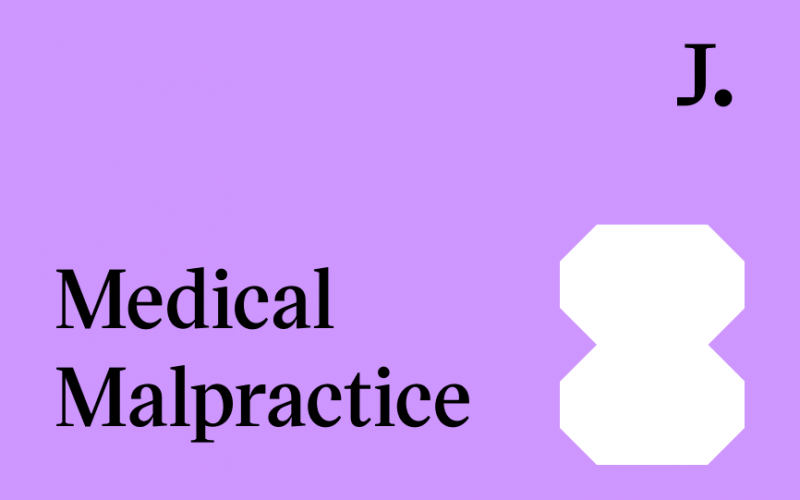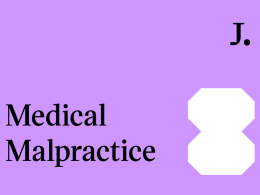A skull fracture in an infant happens when the fragile skull is cracked by an external force, mainly after delivery. It could be more lethal because of the difficulty in diagnosing it. Minor fractures can cause few symptoms or complications, significantly higher than reported.
Infants who suffer a skull fracture may experience anything from slight discomfort to severe disability. The symptoms include irritability, tears, tiredness, a swollen or depressed head, and seizures. Infant skull fractures require prompt medical attention, so it’s essential to recognize the warning signs and symptoms early.
What is a Skull Fracture?
Skull fracture is medically referred to as injury to the cranial (skull) bones. The skull is strong and flexible, and it offers excellent protection for the brain. However, it is possible to sustain a brain injury if the skull is fractured after a violent blow or direct hit.
An infant skull fracture is physical damage to the fragile skull of a newborn during pregnancy or delivery. However, some resolve on their own if they have mild symptoms.
Causes of Skull Fracture
Infant skulls are malleable because they are made of skull plates joined together by sutures (soft tissue). The skull plates help in developing the brain to fit into the ever-expanding skull and survive the harsh conditions of gestation and delivery.
Increased pressure during delivery due to medical mistakes are the leading cause of infant skull fractures,
The common causes of an infant skull fracture include:
- Instrumental delivery: Excessive force exerted by delivery equipment like forceps or a vacuum extractor could cause damage to the infant’s skull. The risk of fracture increases in instances where the labor process is prolonged, the baby is substantial, or the infant is presented in the breech position. Baby delivery instruments can range from forceps to vacuum extractors. The doctor may utilize these tools if the birth is complicated and the woman and child require more help. A skull fracture may result if the doctor applies too much force to the instruments. Medical malpractice due to delivery equipment mishaps is the leading cause of fractures in neonates.
- A fracture could occur if the doctor missed the warning signs and failed to perform a Cesarean section. Suppose the doctor failed to order a Cesarean section when it became clear the delivery would be complicated. In that case, they could be held liable for any resulting skull fracture and consequences.
- Spontaneous skull fractures occur because of extreme pressure on the infant’s head. As it emerges from the uterus, the baby must squeeze through the pelvis, exerting significant pressure on the head, before making its way through the birth canal. While most newborns make it out of the birth canal unscathed, the stress occasionally causes fractures.
- Accidents involving sports equipment and cars (passengers or pedestrians). Concussion and postconcussion symptoms can result from a blow to the head sustained during competitive sports, including football, soccer, hockey, and basketball, but are usually not fatal. Adolescent males are twice as likely as females to sustain a concussion due to sports and other activities. Head injuries can also occur in adults and teenagers. Research has shown that spring and summer are peak seasons for head injuries because kids are more likely to play outside and engage in high-risk activities like bicycling in-line skating, and skateboarding.
Types of Infant Skull Fractures
Infant skull fractures can be classified according to their cause and clinical presentation. The common ones include:
Linear skull fractures
A linear fracture is a simple line fracture presenting mild symptoms that can resolve independently. Most linear fractures involve the parietal bone. Skull plates are not dislodged after this fracture. The non-surgical treatment is unnecessary.
Depressed skull fractures
Depressed skull fractures are easy to spot and occur when the skull is sunken down toward the brain. It’s more likely that depressed fractures may result in severe symptoms and complications.
Diastatic skull fractures
Diastatic skull fractures are those that extend along a suture. These fractures might be more severe than a linear one, but they wouldn’t show up on an x-ray early. The child’s growth could exacerbate the effects of the fracture.
Basilar Skull Fracture
A basilar skull fracture is a bone break that forms the skull’s base. Both Newborns and older infants are at increased risk for developing a basilar fracture. Symptoms may include bleeding behind the eardrum or bruises around the eyes. A leak of cerebrospinal fluid (CSF) can cause discharge from the ears or nose in roughly 20% of patients.
Symptoms of Infant Skull Fracture
The signs and symptoms presented during an infant skull fracture depend on the severity of the condition. Keep reading to learn the different signs and symptoms based on stages.
A minor head injury in an infant may not cause any noticeable symptoms. The symptoms of a mild infant skull fracture include:
- Photophobia: It is defined as heightened sensitivity to light
- Phonophobia: Abnormal sensitivity to sound and noise
- Hyperacusis: It is defined as increased sensitivity to noise and sounds
- Nystagmus: it is a term to describe fast, uncontrollable movements of the eyes that may be Side to side (horizontal nystagmus), Up and down (vertical nystagmus), Rotary (rotary or torsional nystagmus)
- Seizures: Seizures can occur early ( within the first week of the brain injury) or late ( more than a week after the brain injury).
- Fatigue: this happens when the brain seems to have less energy.
- Insomnia: is a common sleep disorder that can make it hard to fall asleep, hard to stay asleep, or cause you to wake up too early.
- Irritability: Many people suffer from social anxiety, irritability, anger, depression, general anxiety, and mood swings
- Excessive crying: Baby skull fracture discomforts them, leading to excessive crying.
- Hematoma: This is a Raised, swollen area from a bump or a bruise. A hematoma can cause irritability, convulsions, weeping, and trouble sleeping or nursing. If the bleeding is severe enough, it can destroy brain tissue and potentially be fatal. Surgical drainage may be needed if the bleeding is severe enough to put pressure on the brain and cause damage.
- Scalp Laceration: it is a Small, superficial (shallow) cut on the scalp
- Cognitive symptoms: This presents as problems with memory and concentration.
Fortunately, minor fractures typically have no long-lasting effects or symptoms. Ignoring a fracture because the symptoms aren’t readily apparent is a common mistake.
When these symptoms are present, medical professionals should order imaging scans like a CT or MRI to identify the location and extent of the fracture and determine if it has produced a hematoma or bleeding on the brain.
Symptoms of Moderate to Severe skull fractures in Children
The following are the most common symptoms of a head injury. The child may have varying degrees of symptoms associated with the severity of the head injury in children.
Head trauma, moderate to severe (that requires immediate medical attention), includes the symptoms listed for mild head injury and the signs listed below:
- Intractable migraine: This is a severe headache that does not go away
- Loss of short-term memory: difficulty remembering the events that led right up to and through the traumatic event
- Dysarthria which means slurred speech
- Spastic gait: This is an abnormal walking movement due to a head injury in children
- Hemiparesis: It is a mild or partial weakness or loss of strength on one side of the body
- Coma: A state of unconsciousness from which a person cannot be awakened; responds only minimally, if at all, to stimuli; and exhibits no voluntary activities
- Vegetative state: A condition of brain damage in which a person has lost his thinking abilities and awareness of his surroundings but retains some essential functions, such as breathing and blood circulation.
- Locked-in syndrome: A neurological condition in which a person is conscious and can think and reason but cannot speak or move.
Effects of Long-term Brain Damage on Infants
Depending on the extent of brain injury and the course of treatment, a skull fracture can have a wide range of long-term effects. The brain, mind, perception, body, and behavior are all affected in the long run.
Some behavioral and emotional difficulties children with brain damage experience include irritability, impatience, over- or under-reactivity, violence, and lethargy.
Signs and symptoms of a skull fracture in a baby can be either short-lived and mild or long-lasting and severe. Do not be afraid to ask your doctor for imaging to look for a fracture if you are worried that your kid was damaged during delivery.
The cognitive symptoms
They include:
- memory loss
- low Intellect level
- inability to concentrate
- short attention span
- learning impairments
- failure to grasp the abstract
- bad decision-making.
The Perceptual symptoms
They include issues with :
- Vision
- Hearing
- Balance
- Coordination
- Pain tolerance
- Spatial disorientation.
Neglecting a fracture could be very dangerous. Your child’s fracture may be due to medical malpractice; you may want to take steps to file a lawsuit to seek compensation for your child.
Is Skull Fracture a Traumatic Brain Injury?
Skull bones are broken( skull fracture), a form of head trauma. As the origin of the brain damage is frequently a jarring or violent incident, this condition is sometimes referred to as traumatic brain injury (TBI), depending on the extent of the head trauma. Multiple age groups may be affected.
How Is Infant Skull Fracture Diagnosed?
A doctor may request a diagnostic or physical examination to determine if a newborn has suffered a brain fracture. Imaging aids diagnosis of bone fractures, blood loss, intracranial pressure, and cerebral edema. Imaging techniques such as skull radiographs, CT scans, and MRIs may be used.
Before ordering an imaging test, a doctor may perform a physical examination, such as a full neurological check.
Despite initial optimism, a thorough medical evaluation and diagnostic tests may indicate that the problem is more severe than initially thought. Tests and examinations are used to establish the presence of a brain injury and its severity. The doctor will ask the child and their family several questions about their health and the accident to get a complete picture of what happened. Subsequent medical attention may be necessary after a head injury of the victim experiencing neurological issues.
Diagnostic tests may include:
Blood tests
A blood test is a laboratory analysis performed on a blood sample usually extracted from a vein in the arm using a hypodermic needle.
X-ray:
A diagnostic procedure that uses films and electromagnetic radiation beams to record images of organs, bones, and other internal tissues.
Magnetic resonance imaging (MRI)
A diagnostic procedure uses a combination of large magnets, radio frequencies, and a computer to produce detailed images of organs and structures within the body.
Computed tomography scan (also called a CT or CAT scan)
A diagnostic imaging procedure that uses a combination of X-rays and computer technology to produce horizontal, or axial, images (often called slices) of the body. A CT scan shows detailed images of any body part, including the bones, muscles, fat, and organs. CT scans are more complex than general X-rays. Although an X-ray is helpful when looking for a skull fracture, most skull fractures can also be detected by a CT scan, producing images of the brain. If a brain injury is suspected, a CT scan alone may be used to reduce the amount of radiation the patient receives.
Electroencephalogram (EEG)
An EEG is a test that detects abnormalities in your brain waves or the electrical activity of your brain. A procedure records the brain’s electrical activity using electrodes attached to the scalp.
How Is Infant Skull Fracture Treated?
How a skull fracture in a baby is treated depends on the fracture’s nature, the damage’s extent, and the presence of any complications. Typically, the only treatment is observing and continuing to test the child and image the head.
Both linear and diastatic fractures can heal independently, but their progress must be closely monitored.
A depressed fracture may also simply be monitored, but it may need to be treated surgically. Surgery to drain fluid or blood pooling in the brain is necessary to prevent permanent damage and relieve edema.
Factors that affect the treatment of Skull Fracture
It all comes down to the severity of the injury. Brain swelling is a possible outcome of a head injury due to its confinement within the skull. The brain has little capacity for expansion—the inability to expand increases intracranial pressure, which can harm the brain. Children who sustain head injuries may need to have their intracranial pressure constantly checked.
The factors that affect the treatment of skull fracture include:
- The age of the child
- Their overall health and previous medical history
- The severity of the injury
- Duration of the injury
Treatment of Skull Fracture
Your child’s healthcare provider will figure out the best treatment. Depending on the severity of the injury, the following treatments can be used to treat skull fractures in infants, they include:
- Ice
- Rest
- Topical antibiotic ointment and adhesive bandage
- Observation
- Immediate medical attention
- Stitches
- Hospitalization for observation
- Moderate sedation or assistance with breathing would require being placed on a breathing machine, also called a mechanical ventilator or mechanical respirator.
- Diagnostic tests
- Surgery
- Referral to a traumatic brain injury specialist for the post-concussive syndrome.
Prognosis and Complications of Infant Skull Fractures
Most birth-related skull fractures present with mild symptoms and heal rapidly. Rarely, skull fractures can be more severe and lead to long-term consequences.
Additionally, skull fractures can produce severe problems such as increased cerebral pressure or brain hemorrhage.
Pressure on the brain from a depressed skull fracture can lead to hemorrhaging. Despite these potentially fatal consequences, most infants will make a full recovery.
A baby with a cracked skull has a fair chance of survival and a good prognosis. Nonetheless, for the unlucky few, complications can include brain injury, paralysis, neurological issues, developmental delays, and cognitive disabilities.
A birth injury claim can be filed with the help of an attorney if you believe malpractice or negligence contributed to your child’s condition.
You might be entitled to financial compensation if your kid sustained a brain injury due to medical malpractice.
Keep reading to differentiate between infant skull fractures, concussions, contusions, and other head injuries.
Is a Skull Fracture an Open Head Injury?
Skull fractures can result from injuries that break the skin (called open injuries) or do not break the skin (called closed injuries). The risk of severe brain damage increases when the skull is broken compared to when there is only a concussion or other form of head trauma.
Head Injury is one of the leading causes of morbidity and mortality among children. The victim or an untrained professional might not detect mild symptoms easily. Children can sustain a wide variety of injuries to the head, including those to the scalp, skull, brain, tissue, and blood vessels. Examples of Traumatic Brain Injury include the following:
Concussion
A concussion is a type of traumatic brain injury. When the brain sustains trauma, it can cause a person to lose consciousness or be temporarily dazed and confused for a few minutes to a few hours following the incident. The victim or an untrained professional can undetected mild and transient concussions.
Contusion
Contusions are brain bruises. When the brain strikes the skull, it can cause bleeding and edema near the impact site or the head’s other side.
What Causes Bruising and Internal Damage to the Brain?
Direct trauma to the head, shaking the child (joint in cases of child abuse), or a whiplash-type injury can cause coup-contrecoup, a mechanism that causes bruising and damage to the brain’s internal tissue and blood vessels (as seen in motor vehicle accidents).
As the name implies, a coup lesion is a bruise that occurs right at the point of impact (pronounced COO). A countercoup lesion is a bruise on the opposite side of the skull caused by the brain jolting backward. The brain’s internal lining, tissues, and blood vessels can be torn from being jarred against the sides of the skull, which can lead to internal bleeding, bruising, or swelling.
How Is Increased Intracranial Pressure(ICP) Monitored?
ICP is the force exerted on brain tissue inside the skull by fluids like cerebrospinal fluid (CSF). Normal resting ICP for a supine infant is less than 1.5 – 6 mmHg(millimeters of mercury). CSF pressures in healthy people fluctuate by roughly one mmHg due to changes in CSF production and absorption. However, the body uses several mechanisms to maintain a constant intracranial pressure.
Elevated intracranial pressure is one of the most detrimental characteristics of brain trauma and other diseases, strongly connected with poor prognosis. If ICP levels increase too high, it will almost certainly be disastrous.
Extremely high intracranial pressures are typically lethal if sustained. However, younger patients have a greater capacity to withstand these pressures for longer. An increase in pressure can cause the following damage to the infant:
- Crush brain tissue D
- Displace brain structures
- Contribute to hydrocephalus
- Cause brain herniation
- Brain tumor
- Infarction with edema
- Contusions, subdural or epidural hematoma
- Abscesses
- Restrict blood supply to the brain.
There are two methods for gauging the increased intracranial pressure (ICP)inside the skull. It could be measured by inserting a thin, hollow tube (catheter) into the brain’s cerebrospinal fluid (ventricle).
Some diagnostic method also involves the insertion of a bolt-like device through the skull and into the brain. A monitor is subsequently connected to the ICP gadget to provide a continuous reading of the intracranial pressure. Your child will be given pain medication to help keep them comfortable while the ICP device is in place. The device is removed when there is no significant risk of further swelling on the need for emergency evaluation.
Lifelong Considerations for a Child With a Skull Fracture
The most important thing is ensuring kids’ heads don’t get hurt when playing. When used correctly, helmets can prevent serious head injuries while engaging in sports like bicycling, in-line skating, and skateboarding.
Depending on the area of the brain that was damaged, children may experience a loss of motor, speech, visual, auditory, and gustatory abilities. Individuals may experience either long-term or short shifts in character. These kids will need ongoing medical care and therapy for the rest of their lives.
What Is the Most Common Skull Fracture Seen in Newborns?
An infant skull fracture occurs when a physical force cracks a baby’s vulnerable skull, often during labor and delivery.
Linear skull fractures are the most common type of skull fracture in infants. Linear skull fractures are characterized by a straight crack in the bone that does not move the bone itself. Patients require observation and rarely need surgery.
How Serious Is a Skull Fracture?
A skull fracture is a head injury with a break in the skull bone. While mild fractures can cause few problems and heal over time, severe fractures can lead to complications, including bleeding, brain damage, leaking of cerebrospinal fluid, infection, and seizures.












